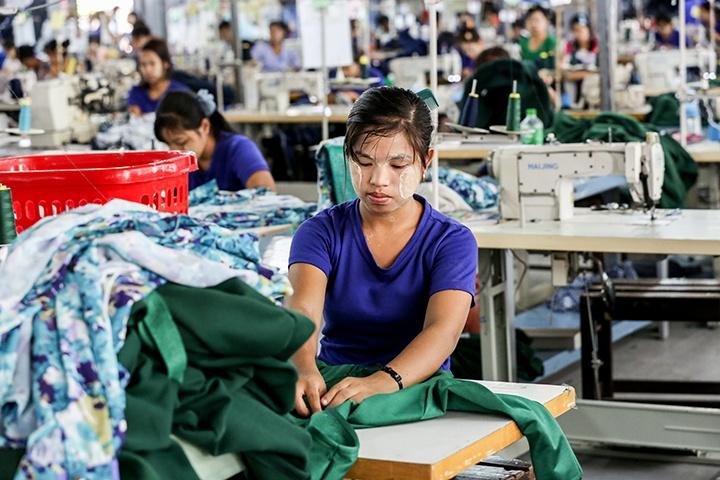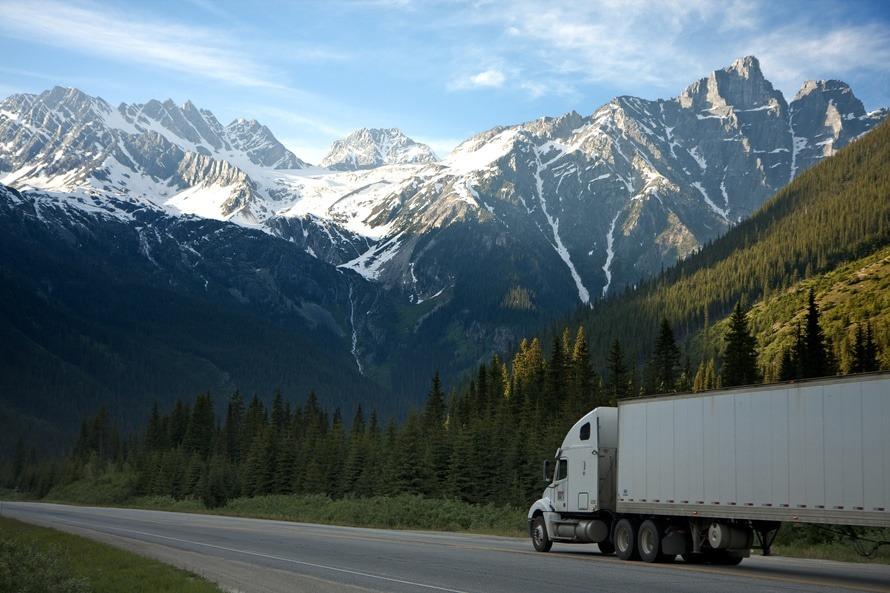Despite Low Oil Prices, Electric Vehicle Sales Keep Rising


The two-year slump in oil prices has some analysts worried, and others crowing, that electric cars are in for a murky future if prices for vehicle fuel remain low. But several recent reports suggest that, if anything, sales of electric vehicles (EVs) and cars not built with the conventional internal combustion engine (ICE) are actually on the rise.
Across the world, electric car sales are on the upswing in developed and developing countries alike. The International Energy Agency (IEA), which has issued its annual report covering the sales of EVs, is bullish on their future. According to the IEA’s Global EV Outlook, last year saw the number of electric cars* on the world’s roads pass the 1 million mark for the first time in history. Approximately 80 percent of the current 1.26 million electric cars worldwide are driven in five nations: China, Japan, the Netherlands, Norway and the United States. EV batteries continue to become more efficient, while their costs decreased by a factor of four since 2008. But the IEA has suggested that EVs still need support from policymakers in order for them to increase their adoption and deployment.
The overall increase in sales of both battery electric vehicles (BEVs) and plug-in electric hybrid vehicles (PHEVs) is supported by additional data. The consultancy EV Volumes estimated that, for the first four months of 2016, global sales of BEVs and PHEVs amounted to 180,500 from January to April this year, a 42 percent increase from 2015. These numbers come on the heel of the fourth quarter in 2015, when sales surged due to the decrease of financial incentives in nations including Denmark, the Netherlands and Sweden.
And according to Navigant Research, sales of non-ICE cars will continue to increase over the next decade. The worldwide sales of hybrid, BEVs and PHEVs together totaled 2.6 million cars last year. By 2024, advances in technology, climate-change mandates and purchase incentives will see that number increase to over 6 million cars. Navigant’s analysts are anticipating that PHEVs will comprise a larger ratio of those sales, from just 30,000 in 2011 to over 500,000 in 2024. Economies of scale, a decrease in battery charging time and and increase in range will be the underlying causes, the group predicts.
Watch for this trend to continue as companies such as GM, Nissan and Tesla roll out BEVs with a longer range and sticker prices under $40,000. And much of the growth in the mainstream adoption of electric vehicles should continue in the U.S., as well as China, where the government is considering mandates similar to ones passed in California, Bloomberg reports. California’s program eschews subsidies for drivers in favor of policies designed to motivate companies to produce or deliver cleaner-running cars, such as EVs, in larger proportions to conventional cars sold throughout the state.
Image credit: Dave Pinter/Flickr
*The IEA broadly defines electric cars by including battery-powered, plug-in hybrid electric and fuel-cell electric vehicles (BEVs, PHEVs, FCEVs), but the scope of its report was limited to BEVs and PHEVs).
H&M Embarrassed After 14-Year-Olds Found Working in Burma Garment Factories


As Burma (also known as Myanmar) opened itself to the world in recent years, companies from Coca-Cola to Chevron to garment manufacturers invested in this Southeast Asian nation home to 53 million people. As Reuters reports, foreign direct investment (FDI) in Burma last year reached over $8.1 billion as companies see cheap labor in the short term and a robust market in the long run.
The garment industry, always looking for countries where operating costs are low, has been a huge investor in Burma over the past few years. But there's an ugly side to this trend. And this case became evident as H&M was embarrassed by revelations that teens as young as 14 years old were found working within factories contracted with the fast-fashion giant.
Two Swedish authors, whose book on the garment industry will be released next week, interviewed girls who worked for factories as young as 14 years old, and whose workdays in factories went as late as 10 p.m. and as long as 12 hours a day. The book, "Modeslavar" ("Working Slave"), alleges that the garment industry has made little progress despite the 2013 Rana Plaza tragedy in Bangladesh. That factory’s collapse, which killed over 1,100 people and injured another 2,000 workers, exposed many wrongs within the garment industry as many labor activists accused some of the world’s leading fashion brands of not doing enough to address the human-rights violations endemic within the sector. Tobias Andersson Akerbom and Moa Core Strand, however, say in their book that despite promises of reform, the industry is still driven by a search for the lowest wages at the expense of poor workers’ health and safety.
According to a report issued last fall by Oxfam, conditions throughout Burma’s garment factories are abysmal. Workers within the sector usually work six days a week and put in 10.5 hours of overtime weekly on average. Although the Burmese government instituted a minimum wage a year ago, that $83 monthly wage is often not enough to support workers’ families. Furthermore, 1 in 3 workers claimed to have been injured on the job. Verbal abuse is also the norm during working hours, and 1 in 4 workers said they were forced to work overtime. Working during lunch breaks and late at night are the norm as building doors are often blocked or even locked so workers cannot leave.
A World Bank analysis, while far more Pollyanna-ish than Oxfam’s stark assessment, acknowledges the Burmese government has a long way to go before any industry can manufacture goods within the country with a clear conscience.
As the Guardian reports, H&M says it has taken action on the two factories in Burma where these abuses were reported. But the company also defended itself by saying that, according to the International Labor Organization (ILO), working 14-year-olds are not considered child labor in Burma. Other fashion companies contacted by the publication which contracted with factories in Burma said they had policies in place to prevent younger workers from being employed. Burmese children between the ages of 13 and 15, however, can do “light work” that does not have an impact on their health, safety or education. But as in the case of many developing countries, oversight is lax while competition within the garment industry is fierce.
The United Nations’ International Conventions on Child Labor has a strict definition of what age is too young to work in a potentially dangerous environment such as a garment factory. In no way may children under the age of 18 work in a place that jeopardizes their “health, safety or morals,” with that age lowered to 16 only under very strict conditions.
But Burma is not a signatory to these U.N. conventions. And the evidence suggests that if the garment industry does not do a better job of working with labor organizations to ensure Burma does not become yet another Bangladesh, the world could witness another tragedy in the quest to produce cheap clothing at the expense of human rights.
Image credit: World Bank
Could Startups Born Out of the #AirbnbWhileBlack Outcry Succeed?


Kristen Clarke, the president and executive director of the Lawyers’ Committee for Civil Rights Under Law, wrote an op-ed piece in the New York Times on Monday, where she gave Airbnb advice on fighting racial discrimination. At the end, she mentioned that until Airbnb will change its course she “and many other minority consumers will appreciate the certainty regarding our rights that comes with an old-fashioned hotel reservation.”
Well, the good news for Clarke is that it seems like hotels won’t be the only option after all.
No, Airbnb has not agreed to adopt her recommendations to audit hosts that are suspected of discrimination, permanently bar those who discriminate, and stop making users display their name and picture in their profile. However, the good news for Clarke is that two new startups, which put inclusivity at the core of their value propositions, are about to launch.
Like many entrepreneurship stories, both Noirbnb and Innclusive (formerly noirebnb) also started with bad customer experiences -- in this case, bad Airbnb customers. Stefan Grant founded Noirbnb with Ronnia Cherry, after he and his friends who rented a house in Atlanta were surprised to see police officers knocking on their door one morning. “Apparently the neighbors saw a bunch of Black people in the house and assumed they were robbing the place,” Grant and Cherry wrote on Noirbnb’s website.
Grant tweeted a smiley picture with the cops, which went viral and got the media's attention. He was then invited together with Cherry to Airbnb headquarters in San Francisco to discuss how the company could better serve the black community, but nothing came out of it. When the two understood that the company would not embrace their suggestion to open a program for black travelers that ensures they feel at home at Airbnb, they decided to start it on their own. Fast foreword a couple of months and Noirbnb, aiming “to serve the community and be The Future of Black Travel,” is online. It's not active yet but is already accepting listings.
Rohan Gilkes, who founded Innclusive, was also not happy about his Airbnb customer experience. Like many other black customers’ stories that were shared on social media with the hashtag #AirbnbWhileBlack, Gilkes’ story is about being discriminated against by a host in Idaho. Gilkes confirmed the story by having a white friend approved by the host for the same dates for which Gilkes received rejection. Gilkes was also upset about Airbnb’s late response, which he also thought was ineffective and led him to eventually launch Innclusive. "It really grew out of the lack of response … If [Airbnb's] response had been a little more empathetic, or where I felt they were taking the problem seriously, I would be doing something else with my time," Gilkes told Money Morning.
So, what will distinguish both of these sites from Airbnb? It’s not clear yet in terms of the features, as both sites are still not operating. But Innclusive, for example, suggested it will include a tool that does not allow hosts to see pictures of guests until after the booking has been approved. This is similar to Airbnb's ‘instant book’ option, which allows users to book instantly without the need to receive in advanced approval from the host. The difference though is that on Innclusive this function will probably be applied for all listings, not just some of them like in Airbnb. And that if a host cancels an Innclusive reservation after seeing the guest’s picture, they won’t be able to book their place to someone else on these dates.
However, as important as features are, the main difference could be in the values and the culture of these websites. Innclusive wants to be “a place where you can travel with respect, dignity, and love, regardless of race, sexual orientation, gender identity or any of the other things that humans use to discriminate against other human beings.” Noirbnb wants “to ensure that our community feels welcome, wherever they choose to travel and never have to face discrimination on their journey.”
Now, it’s not that Airbnb doesn’t care about these issues. After all, belonging is at the core of the company as manifested in its slogan ("Belong Anywhere") and logo. However, I believe that Airbnb sees belonging more through the lens of value-creation rather than through the lens of values. You can see it, for example, in its stated values: "host," "champion the mission," "every frame matters," "be a serial entrepreneur," "simplify and embrace the adventure." These values are geared toward providing a great user experience, but do not necessarily manifest any moral or ethical considerations and choices. As Katie Dill, head of experience design at Airbnb, explained last October on the O’Reilly Design Podcast:
“There are three [values] that are pretty much behind all the design work as well as the thinking and the processes of the people working here, which are: being a host, simplifying and every frame matters. So with those three, they become really powerful in our design decisions and we translate that to our work.”
What I see here is a gap between practices and processes that are all about providing great user experience and the company’s mindset that is supposed to be about values, but somehow isn’t. The result is not just issues like #AirbnbWhileBlack, but also the company’s challenge and difficulty in dealing with such corporate responsibility issues. Now that Airbnb is trying to fix its platform, the test will be not if it will create better processes and practices, but if it will manage to embed inclusivity into its mindset and culture. (Remember what Peter Thiel told CEO Brian Chesky about culture?) The way to do it, though, will probably be bottom-up rather than top-down. This is challenging with over 2 million listings, but it's probably the only way to do it in a peer-to-peer platform.
The challenge for Noirbnb and Innclusive will be to prove that they are not just a noble idea that is built with the right values and mindset, but also that they know how to translate these values and mindset into a scalable marketplace generating great experiences for both users and hosts and making everyone feel comfortable using it, not just those discriminated against by Airbnb. If these firms manage to do so, they could succeed. If not, they’ll at least be remembered as those showing to Airbnb and everyone else that values still matter.
Image credit: Facebook
The Issue with the DOJ's Private Prison Decision


Politicians are making a big deal about a decision by the Department of Justice to end its use of private prisons. The DOJ cites a history of poor care standards for inmates and high recidivism as drivers for the move. But what might sound like a win for human rights might in fact be just a drop in the bucket.
While 13 private prisons will cease operation due to the DOJ move, the industry will continue to house most of the nation’s convicted illegal aliens, the population responsible for supporting these jails. The prisoners aren’t managed by the DOJ, so no matter what is said, government support for substandard conditions will continue.
Why use private prisons?
The United States has one of the highest incarceration rates on the planet, so it’s no surprise the business of locking people up is a lucrative one. Prisons in the states fall into two categories:
- Those run by the government, which comprise the majority of facilities
- Private operations that house between 8 and 10 percent of the prison population
The private prison industry saw growth during the ‘90s as a cost-effective way for the government to house inmates doing time for immigration and mostly minor drug offenses. Today, the majority of private prison inmates are “criminal alien” males with less than 90 months remaining on their sentences.
Capitalism in the prison industry
In the private model, a prison receives a stipend from the government based on the number of inmates housed in a facility. The obvious danger of this model is the potential for the prison to function as a holding pen, rather than a rehabilitation facility. Finding ways to do things cheaper allows so-called 'nonprofit' private prisons to retain more of their stipend, meaning more cash for private operators.
The dynamic this creates is a vicious cycle that relies on a roughly 75 percent recidivism rate to fuel inmate housing operations where people can’t learn skills to improve their situations and suffer from a lower quality of life compared to inmates in federal facilities.
Scrutiny of the laws that landed many of these inmates in prison is one motivator for the change. But the fact is that the majority of private prison inmates aren’t under the Department of Justice’s purview. Only just over 22,000 inmates reside in the 13 facilities that will close under the DOJ’s decision, which means that the private prison industry will continue to deliver substandard care to hundreds of thousands of inmates.
Others must follow suit
If the government really wants to achieve better standards of care for all those doing time, the departments with control of the immigrant populations keeping private prisons afloat must also cease their use of these facilities, specifically the Department of Homeland Security and Immigration and Customs Enforcement.
As of 2015, just over 60 percent of detention beds for convicted immigrants were outsourced to private operations, comprising over 250 facilities spread out across the nation. With nearly 400,000 inmates a year detained by Homeland Security, the withdrawal of 22,000 from the DOJ will do little to right the current situation.
The question is whether the government is interested in making an impact that is more than just symbolic.
Image via: Pexels
Corporate Cheat Sheet for Engaging Shareholder Activists


By Matt Stites
Corporate stakeholders are a diverse group. From consumers, suppliers and community members to civil society representatives and policymakers, each are uniquely impacted by a company’s operations and contribute to the company’s growth. The level and type of investment varies among these groups. But SRI, socially responsible investing or a focus on “Sustainable, Responsible and Impact,” is unique in its interest and influence.
An SRI investment philosophy is built on equal parts fiscal responsibility and social advocacy. Through active cause- or issue-based investment, the SRI community seeks to influence company decision-making to advance goals in specific areas of concern, collectively termed ESG (environment, social justice and corporate governance).
Engagement with such active, long-road investors presents a particular set of challenges for companies. At what point in the relationship -- and how often -- should you engage? Are these collaborative or confrontational investors? Who do they represent, and do your fiscal and operational goals align?
When done right, engaging the SRI community can lead to invaluable opportunities to assert industry leadership on key issues. These stakeholders can give companies an “around-the-curve” perspective on emerging sustainability challenges, enabling them to mitigate future conflicts with other influential stakeholders, both internal and external.
As specialists in stakeholder engagement, the Future 500 team regularly helps companies forge more effective relationships with the SRI community around a range of issues. It’s a complex space to navigate; with input from our network of SRI authorities, opinion leaders at major investment firms, and our own in-house engagement experts, we’ve compiled a “cheat sheet” companies can use to develop healthy, proactive relationships with their SRI stakeholders.
1. Think beyond the 10-Q
SRI investors often have a much broader, or at least more long-term, set of goals than those contained in a typical quarterly report. For example, Holly Testa, investment advisor representative for First Affirmative Financial Network, suggests material impact might go further down the supply chain or include social or environmental factors that a corporation might not consider.“The SRI community focuses on ESG factor analysis as a way to mitigate portfolio risk, while identifying and profiting from better managed companies over the long term,” Testa says. As a result, the definition of ‘materiality’ might be a bit broader than what some companies are used to.
In other words, SRI investors want to ensure the companies in which they invest has made a full assessment of the long-term risks and opportunities. Addressing this need will likely lead to happier, more committed investors.
2. Don’t wait for a resolution to be filed in order to engage
One easy way to offset the cost and pressure of official shareholder inquiries is to engage on a regular, informal basis.“Many companies ignore initial attempts by investors to communicate – for months,” says Conrad MacKerron, senior VP of corporate responsibility firm As You Sow. Even without detailed or specific answers, informal engagement demonstrates respect for investor concerns.
Conrad says frustration over non-communicative companies can cause SRIs to increase the ask, lose flexibility in negotiations, and eventually lead to the filing of a shareholder resolution. When it comes to informal engagement, companies have a lot of options -- from casual phone calls to sustainability conferences and the annual SRI conference. The key is to establish a channel through which investors feel they are being heard and their concerns addressed.
3. Come prepared
Every SRI shareholder is looking for leadership to demonstrate comprehensive knowledge and familiarity with corporate resources and sustainability commitments. It’s what led them to invest in the first place. While the documentation may take some time to uncover, it’ll be worth it to start off from an informed position to build on investor discussions. MacKerron says it’s crucial to have a toolkit of figures and best practices.“Every CSR person should have standard sustainability benchmarks at their fingertips – GHG emissions, energy and water usage, accident rates, waste and recycling rates.”
Read up on your key issue areas-- if your SRI investors have any specific questions, detailed answers will only build confidence in your authority and ability to act.
4. Bring in the experts
In addition to thorough research, direct engagement requires a strategic mix of personnel to answer complex questions. SRI issues often call for a level of expertise that goes beyond the realm of a typical Investor Relations specialist. Issue experts in sustainability, supply chain management, engineering, HR-- whatever your topic areas-- can demonstrate the extent to which corporate and SRI values align.MacKerron says it’s important to respect SRI expectations. Most have filed a number of resolutions in the past, and won’t be fooled by half-measures. The conversation may start in PR, but it should be escalated to experts as soon as possible.
“Funneling everything through a PR figurehead or the legal department will not be viewed as proactive engagement,” he warned.
Holly Testa agreed: “The responsible investment community is interested in not just the public face of your sustainability initiatives, but also how sustainability is integrated into the strategic and operational aspects of the company.”
In other words, be up front about the technical challenges that might arise out of SRI requests. Discussing the agenda with investors can open their eyes to the practical elements of corporate commitments, leading to solutions that are more efficient for both parties.
5. Be transparent
Shareholder outreach is often a simple request for information rather than reform in company policy or practice. These kind of low-stakes, low-effort engagement opportunities should not be ignored -- again, proactive response to these requests are far less costly and cumbersome than addressing formal shareholder resolutions.Such opportunities for transparency include existing research, cost/benefit analysis and estimated timeline for action. And as Susan Baker, VP of shareholder advocacy at Trillium Asset Management suggests, access to personnel such as company board members upon request. Open as many channels of communication with SRIs as legally possible, but don’t use fine print as a buffer for engagement. Abusing legal forces investors into formal action, such as shareholder resolutions, to seek corporate engagement.
6. Treat shareholder resolutions as an opportunity to engage
A shareholder resolution isn’t necessarily an indictment on your corporate culture or policies. Often time these resolutions are filed with the intention of opening a channel of constructive dialogue through which a company and its active investors can address critical issues. Testa reminded companies that investors are likely already on their side when considering a resolution.“Chances are good that the activist investor owns shares in your company because they believe you are a quality company already on a sustainable path,” she says.
MacKerron warns against restricting or shutting down engagement in response to an official shareholder resolution. SRIs are increasingly adept at using tools like social media to network with advocates and corporate campaigners, and adversarial response on the part of the company can devolve quickly into an untenable PR situation.
There is still plenty of room for positive engagement in the context of a shareholder resolution, MacKerron says.
“Proponents should be treated as part-owners in the company looking to make a good company better.”
7. Think twice before challenging a resolution
If a resolution is filed, there might be some instinct within the relations board to challenge it with the Securities and Exchange Commission. However, Testa warns, don’t be so quick to act.“Even if you believe you have a case [with the SEC], consider the consequences,” she says.
The court process alone is an enormous drain on human and financial resources for the company and, by extension, its investors. It also sets a precedent that a company is prone to litigation over long-term shareholder engagement on important shared issues. It’s often seen as a short-term avoidance of long-term responsibility. Instead, proactive negotiation might lead to an actionable compromise that satisfies all issue stakeholders.
8. If dialogue stalls, remember your shared values
As you work through your response to a shareholder resolution, it’s crucial to remember your stakeholder engagement fundamentals. As Susan Baker points out, stalled negotiations can find new life if you establish and acknowledge overarching common interests.Remember: SRI investors and companies often align on the end goal, despite differing views on how to get there. Reminding both sides of that shared higher-level interest can lead to creative solutions that serve both corporate and investor objectives.
9. Recognize that SRI expectations are increasing
Kellen Klein, senior manager of stakeholder engagement at Future 500, says corporations need to be aware of scaling shareholder demands.“Corporate sustainability performance and commitments are rapidly increasing. As they do, so do investor expectations,” he says.
He urges companies to fairly assess SRI requests and resolutions before writing them off. A competitor analysis, for example, can provide invaluable industry benchmarks to determine your company’s performance in ESG issues. If the results are sub-par, SRI engagement should should prioritize even higher. These organizations can offer guidelines and best practices to strengthen corporate commitments.
MacKerron points out that this should be standard procedure in a company’s response strategy.
“If a shareholder proposal is filed, don’t seek to withdrawal by the proponent in exchange solely for a commitment to engage,” he says. This approach precludes access to invaluable resources to both elevate corporate ESG response and mitigate risk of public scrutiny and criticism.
10. When in doubt, engage more stakeholders
When it comes to engaging SRI investors, you aren’t alone. Seek industry feedback in SRI communication and benchmark competitor responses. The lessons learned and best practices available can lend crucial insight into the investor landscape, including which groups or representatives are open to constructive dialogue.This is where positive SRI engagement can pay off in a big way. If challenges arise with particular investors, seek feedback from positive relationships. Not only is this good investigative practice, but the relatively small SRI network means successful engagement can be leveraged to greater effect in supporting new or developing relationships. Build a good rapport with influencers within your industry, and the word-of-mouth benefit will come full circle.
The same can be said for the advocacy community. These investors are often on close terms with many NGOs and environmental thought leaders. Think of these organizations as more resources for nuance and expertise in a given issue -- successful engagement within these groups leads to greater issue authority and network support in negotiations.
Matt is the marketing and communications coordinator for Future 500, a stakeholder engagement nonprofit dedicated to finding common ground between uncommon allies, from corporate executives to environmental activists.
Why Sustainability is Missing the Data Party (and How to Sneak In)


By JD Capuano
Sustainability professionals should have a fear of missing out … on data.
Data are crucial to decision-making in businesses. Period. You simply don’t have a seat at the table without meaningful data.
Sustainability data are typically high-level, gathered for external reporting, disconnected from business performance, and not very actionable. Such limitations prevent sustainability professionals from making a convincing business case.
This is the exact opposite of business-critical data used to analyze and improve company performance. It's also a key reason executives don't take sustainability seriously enough.
So, why do we take a backward approach to sustainability data?
Outside forces pressured companies into sustainability
Companies have only begun to take sustainability seriously during the last decade or two and largely because of external stakeholders.
NGOs and investors played the leading role in convincing companies to address environmental, social and governance (ESG) issues. Consequently, 81 percent of S&P 500 companies published sustainability reports last year, detailing their ESG performance. Thus, corporate sustainability evolved to focus more outwardly than inwardly.
Don’t get me wrong. Communicating progress against goals and making disclosures more transparent are both important. However, sustainability is growing up. It needs detailed analyses that link to corporate objectives to get to the next level.
If you work in sustainability or corporate social responsibility (CSR), you may think that your focus is internal. But is it really? Stop and ask yourself the following:
Do sustainability data drive C-suite decisions in the same way as production, sales and marketing data?
I doubt you can answer "yes" unless your company already sees sustainability as a growth opportunity.
Why are we still missing the party?
Executives often think of sustainability teams as cost centers.
Cost centers receive limited resources. To make matters worse, sustainability often gets further marginalized by being considered a nice-to-have function. As a result, CSR professionals face a steep uphill climb to influence systemic changes to operations, strategy and culture.
Data can make the climb easier.
Let's take a manufacturing example. First, imagine seeing key sustainability drivers at any level of detail – by product line at one factory, by SKU or for an individual unit. Next, imagine drilling down into those drivers at almost any level (business units to individuals, regions to buildings, etc.) and comparing differences.
How do you get there?
You may be thinking software, but the first step is creating a nexus between data and sustainability.
Most sustainability professionals aren’t data scientists and most data scientists don’t have much knowledge of sustainability. While cross-pollination of sustainability and data expertise is beginning to take place, it’s not happening fast enough.
Fast enough means at least one person on every sustainability team learning basic data literacy as quickly as possible. It will make your team more effective at managing internal or external data resources.
Learn to code in R or Python if you want to go much faster. Did you know CEO Jeff Immelt recently announced that every new hire at GE will learn how to code? Even if you want to code, start with data literacy. Connect with data scientists or business analysts at your company. Ask them about their work and where you can get started.
Data literacy is especially important for sustainability software. If you learn a platform’s capabilities, you'll know how to collect and feed it more data to supercharge your analytics. That's where the power of data really takes off.
Crashing the party (and maybe even getting invited)
Becoming a corporate priority is the next step.
Despite what we read in CEO surveys about its importance, working in sustainability often has the feel of eating at the kids’ table. Fun as that may be, as we grow up we want our voices heard and taken seriously at the adults’ table.
Data drive those “adult table” boardroom conversations. Get heard by using data to uncover compelling stories that matter.
Collect granular data. Apportion them where necessary. Connect sustainability impacts to business drivers. Look across the enterprise and dive deep where it makes sense. When you have enough, the data will guide you (along with your business acumen).
Companies putting an internal price on carbon, setting science-based goals, and mapping supply chains represent some of the most detailed uses of sustainability data today. Not many companies have developed an internal price on carbon or had their science-based goals approved due to the resources required (though the list of companies taking the pledge grows steadily). And transparency issues hold back supply chain mapping.
I'm not saying any of this is easy, but I am arguing that it's worth the effort.
Smart, detailed analysis will influence senior management to think bigger about unlocking the potential in sustainability. You can wield such influence by learning to analyze data in a way that’s meaningful to business priorities. Getting good with data takes time and resources, but can inspire innovation, competition and profitability.
Data-driven sustainability insights can transform how executives think in this age of disruption. And that deserves a seat at the table.
Image credit: Flickr/Sebastian Sikora
JD Capuano co-founded Closed Loop Advisors, is a strategist for Third Partners, and teaches about data at Bard College’s MBA in Sustainability. He is a problem solver using strategy, data, technology and imagination to address social and environmental problems.
Air Quality Regs Crucial to Truckers' Health; Employer Negligence Persists


By Ryan B. Bormaster
Hey truckers, what are the emissions on your rig? If you don’t know the answer, you could be in trouble -- and we’re not just talking about legal trouble, either.
In 2008, the California Air Resources Board (CARB) pushed through a series of regulations related to heavy-duty diesel truck emissions. Among other things, these regulations require any trucks operating within the state to be fitted with a diesel soot filter. That’s good. Clean air is important.
And whether or not you believe in climate change, the fact is that these regulations aren’t just essential for the health of the environment. They’re also essential for truck drivers' personal health. Truck driving is already one of the deadliest jobs in America, with long hours and a significant risk of health complications due to poor diet, high stress and a lack of sleep.
All of that is bad enough without factoring in that diesel pollution is known to be highly toxic and associated with increased risk for heart disease, birth defects, heart attacks and death. These laws, in other words, aren’t in place without cause. And yet, for some reason, there are still companies that try to get away with shirking them.
Take, for example, a Virginia firm which late last year had to pay over $100,000 in fines for operating 73 trucks in California without filters. In an effort to cut costs, the firm put the lives of its employees -- and the well-being of everyone on the road -- at risk.
On one hand, this seems like an extremely scummy thing to do. But on the other, the company didn’t necessarily do it without reason.
The emission rules aren’t exactly easy to follow, after all. Diesel filters don’t work well with older equipment models -- meaning companies that wish to install them have to either upgrade their fleet or risk catastrophic (and quite possibly fatal) component failures, many of which can lead to fire. And even companies that do install the filters still have to spend time and money on maintenance.
At the end of the day, negligence of this kind harms one person more than any other: the trucker. Like anyone else, truckers have the right to an employer with their best interests at heart. They have the right to a clean, safe workplace. And if their companies fail to provide that, truckers have the right to fight for it until they do.
But what does that involve, exactly?
You could go directly to a governing body such as the Environmental Protection Agency with proof of wrongdoing. Doing so unprepared could potentially put your career at risk, however. Far better that you speak to an attorney first, especially if you’ve been harmed in any way by your employer’s practices. (Disclosure: My firm provides such services.)
Image credit: Pexels
Ryan B. Bormaster is the managing attorney at Bormaster Law. The law firm practices in a number of areas but specializes in 18 Wheeler Accidents, Accidents with Commercial Vehicles such as Work Trucks and Catastrophic Injuries of all kinds.
COP21: Getting down to business


COP21: Getting down to business
By RP Siegel — COP21 has been hailed as a historic event because of the way it facilitated 196 countries to come together in support of a shared ambition to head off accelerating climate change before it’s too late. It’s a tremendously important moment, or at least it will be if those words and promises lead to action. It raises the unprecedented possibility of all the peoples of the world working together towards a common goal. A report by Business for Social Responsibility (BSR), along with the We Mean Business coalition, entitled “The Paris Agreement: What It Means for Business,” lays out a set of recommended actions for businesses and investors in response to and in support of COP21.
The report translates the multiple outcomes of the Paris Summit into a concise set of straightforward statements:
* [What]: Climate ambition is universal (2°C with a stretch goal of 1.5)
* [When]: The international community has committed to net zero emissions in the second half of this century.
* [Where]: All countries are subject to the same reporting and verification framework
* [How]: Financial flows are committed to shift towards low-carbon and high-resilience investments
* [Who]: The private sector is recognized as an integral part of the solution
The days of businesses focusing exclusively on profits, while governments make sure that no one gets hurt, (minus exceptions made for special relationships)—are not yet over, but a new vision of a better way for the world, and for businesses in particular to work has been articulated and is gaining considerable traction.
An overarching outcome of the summit is the establishment of a level of policy certainty not seen before in this area. Certainty is as crucial for investment as sunlight is for the plants that feed us. For investment there is a goal of US $100 billion per year from the governments of developed countries by 2020. It is understood that substantial additional expenditure will be made. An estimated $90 trillion will be spent on infrastructure by 2030, most of it in developing countries. So, as long as the commitment is to spend that money on sustainable infrastructure, there should be no problem achieving achieving the required investment level. That, in turn, should provide ample incentive for both businesses and companies to invest further in sustainable technologies.
The main process is for each country to prepare national climate plans that will be updated every five years. We are in the preparatory phase for the first cycle which begins implementation in 2020. At that time the new or updated national plans are submitted, and the process repeats every five years afterwards until the goal is reached.
Another major elements coming out of the summit is Mandatory Reporting & Verification. This is a commitment on the part of participating countries to tell the truth when it comes to their emission levels, as least as well as they understand them. This effort will be greatly enhanced by the deployment of new technologies such as space-based verification systems. Not only will this allow countries to get a better handle, with considerable detail, on what their actual emissions are, it will also allow for independent, third-party verification.
Cross-border Carbon Pricing will provide a sizable market within which countries can match capabilities with needs, while at the same time providing continuous incentive for each country to follow a cleaner path to energy production and consumption.
Given this backdrop, the authors make the following recommendations to businesses hoping to thrive in this emerging environment. They are as follows:
1. Seize the Opportunity – We are on the brink of a tremendous surge in demand for clean energy solution of various kinds. China alone invested $110 billion in clean energy last year, an increase of 17% over the previous year. Other major economies will likely follow a similar path in their effort to meet this stated goal. This is now relatively predictable. Embedded in these commitments is a 4,400 TWh of renewable supply that will be required by 2030. That will bring the renewable portion of global electricity generation up to 32%. Renewable capacity in OECD countries should surpass 54% by 2040. The dollars required to get there are considerable. IEA estimates annual expenditures close to $230 billion in the 2026-2040 time frame.
2. Put a price on carbon – Based on data provided by Bloomberg New Energy Finance, onshore wind is already cheaper than both coal and natural gas in the EU. It is expected to hit that point in both the US and China no later than 2023. Utility scale solar will come down to that level a few years after that, all without new government interventions. That’s good but it may not be good enough. Those cost transition points can be accelerated immediately by putting a price on carbon, which will also allow it to more accurately reflect its true cost to society.
3. Manage climate risk- According to the World Economic Forum’s 2016 Global Risk Assessment Report, failure to mitigate or adapt to climate change is the highest impact risk to business for years to come. A recent BSR survey showed that 75% of suppliers felt that climate change would impact their business, yet only 50% had taken action to prepare for this. Risks to be considered include: physical and operational risk, input risk, market risk, financial risk, reputational risk, and regulatory risk. Several detailed examples from across the globe are provided including textiles, manufacturing, agricultural and insurance.
4. Be bold and recognized- Businesses that have moved aggressively on this “have benefited from an average 27% internal rate of return on their low carbon investments, alignment with incoming climate and energy regulation, first-mover advantages in low carbon markets, more resilient operations and supply chains, and a stronger reputation among employees, consumers, and other stakeholders.”
Image credit: Moyan Brenn Flickr Creative Commons
Judge Rejects Uber Class Action Settlement


Are Uber drivers actually employees of the company, or are they individual contractors? At its nascence, the whole point of the sharing economy was that consumers had the freedom to offer a service or product, such as spare room or a drive across town, to gather up some extra cash. The problem with Uber is that drivers started to rely on the ridesharing service as a critical source of income. Uber, in turn, demands what drivers claim an onerous set of rules and time commitment from its drivers. The result has been a flurry of class action lawsuits across the country. Uber offered to settle one class action lawsuit with a $100 million settlement, but last week, U.S. Judge Edward M. Chen for the Northern District of California rejected its terms.
In his ruling on O’Connor v. Uber Technologies, Judge Chen concluded that the settlement as it was structured was not “fair, adequate and reasonable,” despite its nine-figure sum and Uber’s proposed policy changes. In fairness, although the proposed settlement was a sliver of the potential amount that could have cost Uber, Judge Chen said that both parties in this lawsuit still faced considerable financial and legal risks.
Nevertheless, Uber’s reputation as a corporate predator will continue to fester, due to the judge’s rejection of Uber’s proposal that $16 million of the settlement would only apply if Uber reached a certain valuation. Currently Uber’s most recent valuation is $93.75 billion. But Uber’s attorneys requested that portion of the settlement would only be distributed only if Uber’s valuation reached one and a half times its current valuation one year after the firm launches a future initial public offering (IPO).
Let's consider the fact that Uber is one of the Silicon Valley “unicorns” that many analysts say is overvalued, the company still is not turning a profit and any issue and the sale of publicly owned stock would subject the company to even more disclosures and scrutiny. The result would be that the odds of Uber’s drivers seeing that cash anytime this decade hover somewhere between zero and highly unlikely. The judge also noted that Uber did not provide any evidence that such a future valuation was plausible in the near future.
In any event, Uber drivers, who have already claimed they were cheated on gratuities that Uber told riders were included in the price but were allegedly never redistributed to the company’s contractors, the 385,000 drivers in California and Massachusetts who are parties to this lawsuit would not have received much compensation. The average check, if this lawsuit had settled, would have netted drivers less than $260.00, and that figure does not include attorneys’ fees that would have been deducted from those checks. The drivers' compensation would at best have been a few tanks of gas or a servicing of their cars.
The judge’s rejection of the settlement’s terms means that Uber’s drivers are still in legal limbo. Many drivers, knowing a settlement would result in a check from compensating them from what they say are the company’s unfair practices, had declined to participate in the lawsuit. And according to Reuters, Uber could be in for more legal headaches in the aftermath of the decision. The total amount of drivers involved in this case could drop as far as 8,000 because many of them did not opt out of the arbitration clause tucked into Uber’s licensing agreement. That does not mean, however, that they could not become parties to another class action lawsuit in the future.
Image credit: Mighty Travels/Flickr
Samsung to Sell High-end Refurbished Cell Phones


Wouldn't it be great to own a Galaxy S or Galaxy Note 7 with a much lower price tag and environmental impact? According to Reuters, Samsung is planning to launch a program that will refurbish premium smartphones, offering refurbished versions for a lower cost.
Worldwide smartphone sales have been fairly flat recently in Q2 2016 with vendors shipping 343 million smartphone, yet Samsung has gained some market share due to popular products like the Galaxy S7 and Galaxy S7 Edge. "We continue to see a number of changing dynamics in the smartphone market and many vendors are readjusting their business strategy and portfolio to take advantage of these market movements," said Ryan Reith, program vice president with IDC's Worldwide Quarterly Mobile Device Trackers.
For smartphone manufacturers to stay competitive in this market, innovative companies will have to either increase market share or boost profits. By offering refurbished cell phones, Samsung may be able to accomplish both and presumably maintain healthy margins in the process.
Selling the same cell phone twice seems like an ingenious way to increase profitability. Apple sells refurbished iPhones in many markets and the iPhone resells for approximately 69 percent of its original value after one year of use.
Most of the smartphones sold in Samsung's refurbished cell phone program will come from the one-year upgrade program, for people with the interest and means to own the latest devices. Although some of Samsung's recent smartphones have been very popular, they do come at a high price. The Galaxy Note 7 for example starts around $850, making it unattainable to many especially in emerging markets such as India where the average smartphone retails for under $90.Selling refurbished smartphones may be a way for Samsung to stay competitive even with lower-cost manufacturers using its flagship devices.
"Outside of Samsung's Galaxy S7 flagship, a majority of vendors, including Apple, have found success with more affordable models compared to their flagship handsets," said Anthony Scarsella, research manager for Mobile Phones. "As smartphone prices continue to drop and competition escalates at the high-end, vendors will need to continue to push 'flagship-type' devices at affordable price points to encourage upgrading on a more frequent basis." Offering refurbished phones seems like an easy way to achieve this.
Although manufacturers may wish to have shorter replacement cycles to boost sales of new devices with consumers frequently upgrading their smartphones, longer cycles are more sustainable. Manufacturing smartphones accounts for a significant amount of greenhouse gases, although operating them does as well. Smartphones can also avoid the need for other separate devices, such a mp3 players and cameras when users are upgrading from models with fewer features.
Refurbishing smartphones could be relatively inexpensive for Samsung. Refurbished phones will commonly come with a new battery or casing, yet they may open up new markets for its high-end products after one year of use. It might create a dip in sales for Samsung's mid-priced offerings, but it also gives consumers more attractive options overall.
Image credit: Kārlis Dambrāns, Flickr